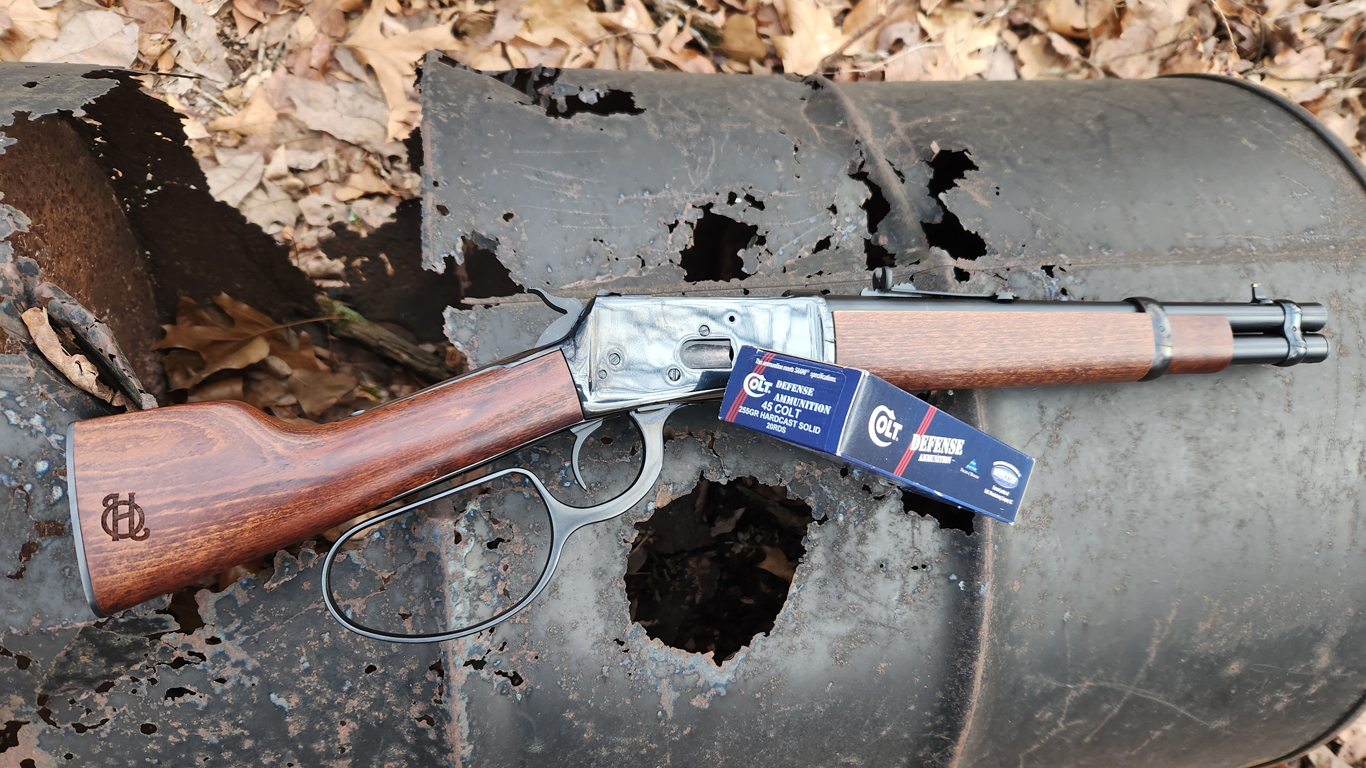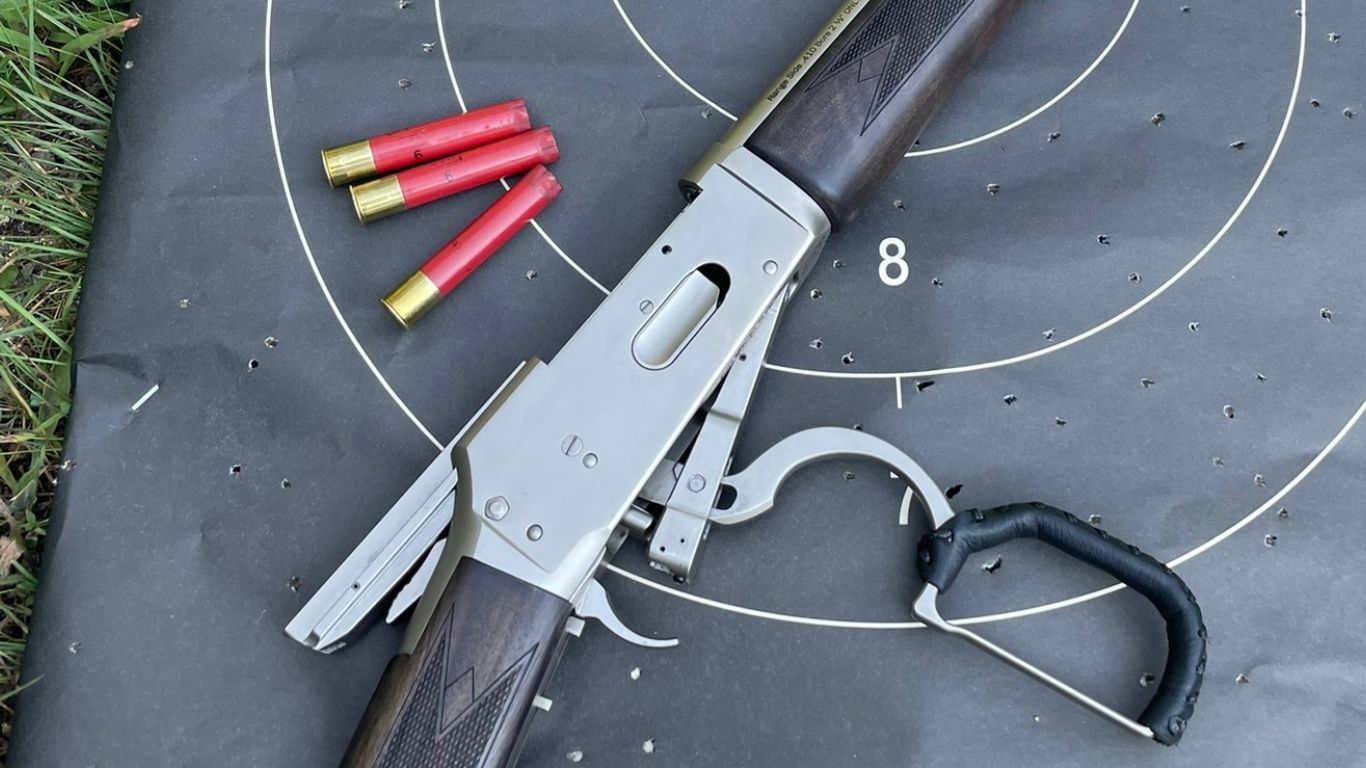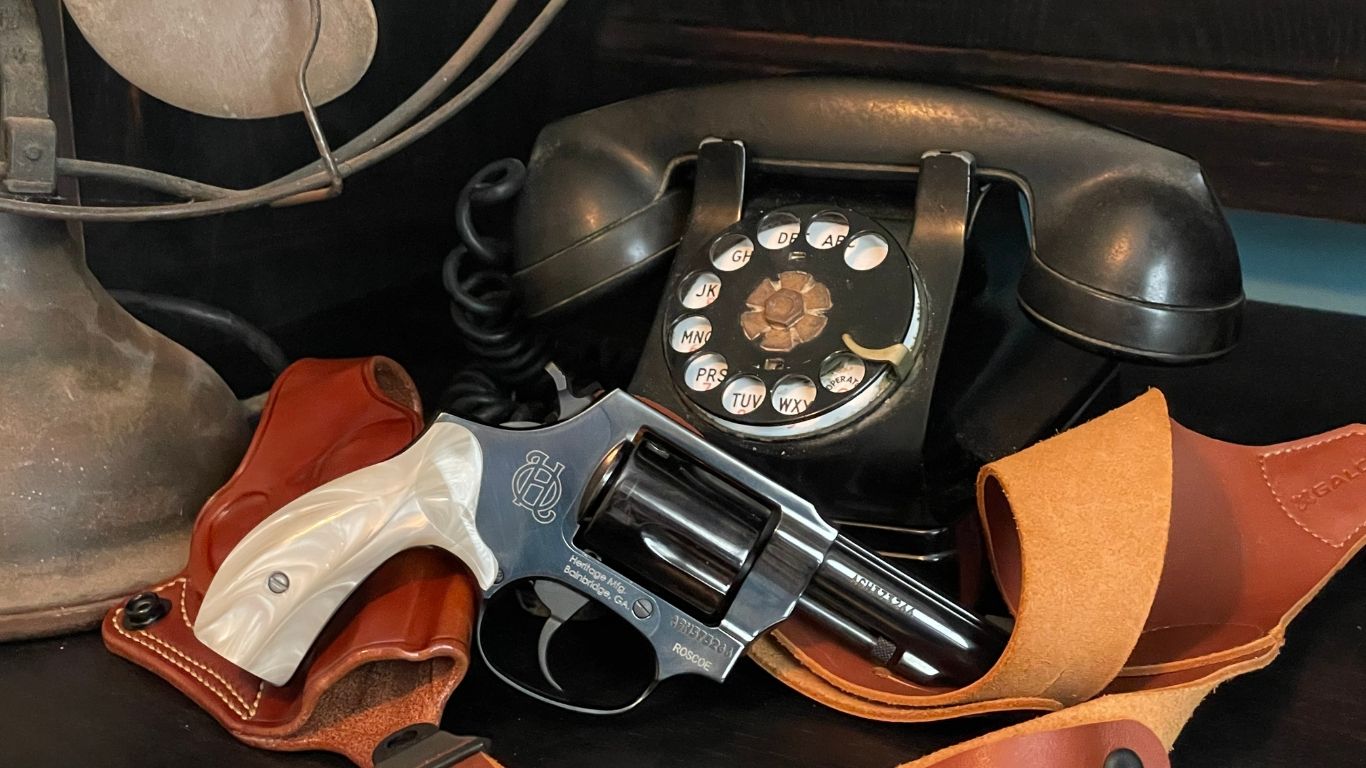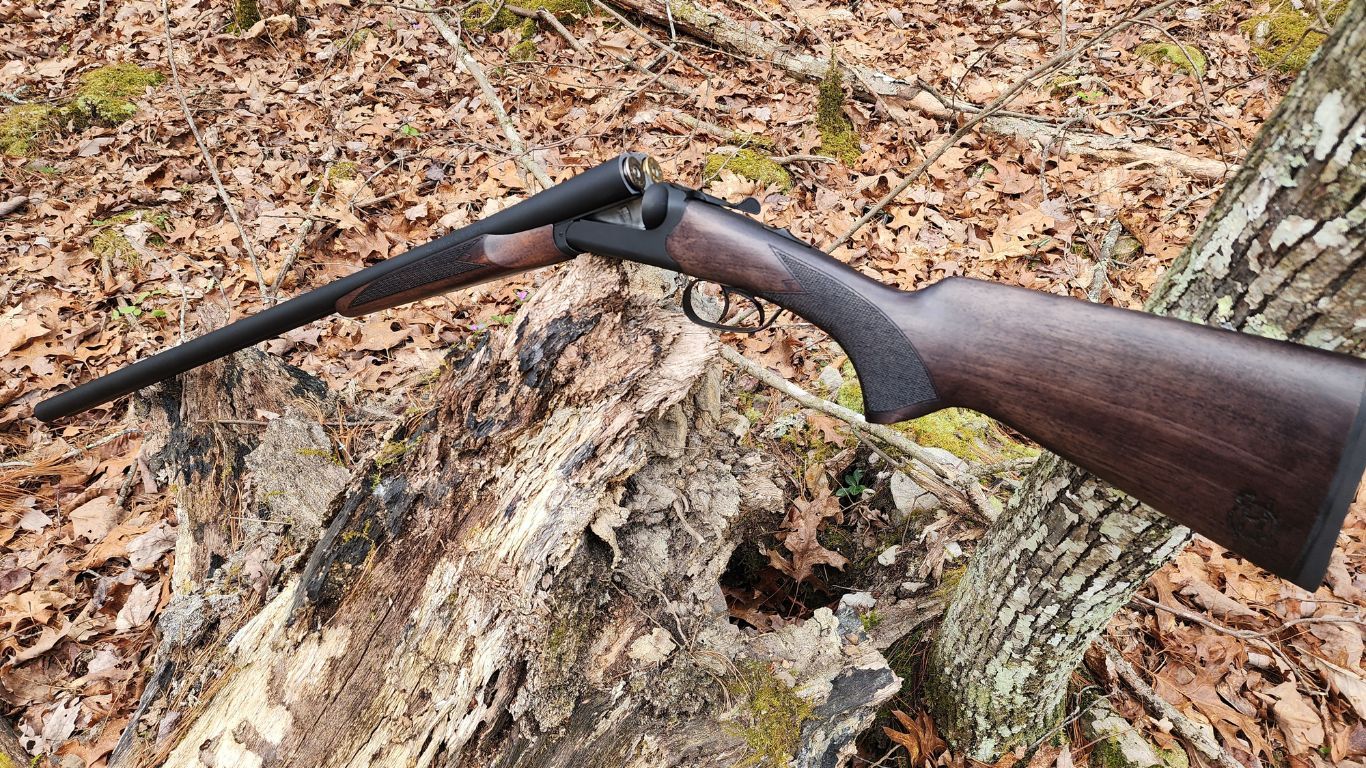The Heritage 92 Ranch Hand Pistol in .45 Colt: Good for Personal Defense?
By Jason BairdIn my previous blog posting about the Heritage Manufacturing 92 Ranch Hand pistol, I recounted some Hollywood history of the shortened lever-action carbine created for Steve McQueen in the TV Western, “Wanted Dead or Alive.” The Heritage Manufacturing recreation of that gun is a near-reproduction (except for the caliber, .44-40) of the shortened Winchester Model 1892 rifle McQueen called the “Mare’s Laig,” and in that posting I told about my history with the show and how, as a young child, one of my favorite toys was a plastic reproduction of the gun. So, I was pleased to have the opportunity to relive some old memories while testing and using a Ranch Hand. I got to thinking the gun would be a good personal defense weapon – particularly since McQueen certainly used it that way many times in the TV show! Even Hollywood has a good concept once in a while.

Heritage Ranch Hand 92 Specs
Here’s a recap of the Ranch Hand’s specifications:
- Model RH92045121, Black color, 12-inch barrel, 6 rounds.
- Available in .44 Rem Mag, .357 S&W Mag, .45 Colt; .45 version was tested
- Stock: Brown hardwood, fixed
- Action: Lever
- Overall Length: 24 inches
- Sights: Adjustable Drift Front / Adjustable Buckhorn Rear
- Finish: Black oxide (barrel and receiver)
- Material: Alloy steel (barrel and receiver)
- Safety: Thumb
- Dimensions: 6.54-inch height, 1.35-inch width
- Weight: 5.05 pounds
Breaking at an average over 5 tries of 5 pounds, 7 ounces on my digital trigger pull gauge, the trigger performed crisply and consistently. Believe it or not, low trigger weight, good consistency and good feel do make a difference when shooting a large pistol such as the Ranch Hand for accuracy from a two-handed hold.
After spending some time shooting the Ranch Hand on the range and carrying it out in the woods as a sidearm, I started thinking that in addition to being a fun gun, it would be a good personal defense firearm. Being longer and heavier than a typical handgun, it is not as convenient to carry as one. There are situations, however, where the Ranch Hand’s barrel length and overall size might be advantageous. There’s also the intimidation factor of forcing a bad guy to face a large caliber weapon that looks like the offspring of a lever-action carbine.
Because of its short length, compared with the carbine or rifle length lever action guns, safely handling the Ranch Hand and moving it to point at targets is quick and easy. I think it would be an effective truck gun because of the available calibers and its greater maneuverability inside a vehicle cab than what you have with a long gun.
Ballistics Involved
So, I compared the ballistic performance of my Ranch Hand to a .45 Colt SAA pistol clone, to see if there was enough difference that would give the “Mare’s Laig” an advantage. I chronographed shots from each gun, using the two different brands of ammo I had on hand. I averaged each brand over 10 shots. For the revolver, a clone of a Colt Single Action Army with a 4.75 inch barrel and 1:16 RH twist rifling, CCI Blazer 200 grain JHP averaged 851.4 fps (feet per second) with a standard deviation of 28.7 fps, and Federal American Eagle 225 grain JSP averaged 797.0 fps with a standard deviation of 16.4 fps. For the 92 Ranch Hand lever action pistol with a 12-inch barrel and 1:30 RH twist rifling, CCI Blazer 200 grain JHP averaged 1159.6 fps with a standard deviation of 17.5 fps, and Federal American Eagle 225 grain JSP averaged 1094.9 fps with a standard deviation of 13.4 fps.
As you can see, the Ranch Hand velocities were almost exactly 300 fps faster for each of the two different ammunition loads, and the standard deviations were lower for each load. Most of the differences were likely due to the cylinder-to-barrel gap of the revolver and to its shorter barrel length. Few revolvers effectively seal that gap, so the escaping propellant gas doesn’t do any work to push the bullet down the barrel. Also, up to a point, guns with longer barrels give the burning gunpowder more time to completely combust and push the bullet before it leaves the muzzle.

Out of curiosity, I looked online for performance information for pistol caliber carbines (PCCs) versus handguns firing the same ammunition. I could only find comparisons using 9 mm ammo, and with semi-auto pistols, but I did find one comparison that included a short-barreled carbine (a rifle per the ATF definition, requiring a tax stamp to own) with a 12.5-inch barrel and a PCC with a 16-inch barrel. Interestingly, the velocity gain compared to handgun baseline velocities for the heaviest (147 grain) 9 mm ammo projectiles was minimal from the PCCs, and their maximum velocities from the PCCs were less than for the much heavier .45 caliber bullets from the Ranch Hand! The Ranch Hand outperforms 9mm PCCs, giving higher muzzle velocities with heavier, larger diameter bullets (and therefore, greater kinetic energies).
Check out the Ranch Hand in its various models at Heritage.
About the Author
Jason Baird is a retired Air Force B-52 navigator and “rocket scientist” and also, a retired professor of mining and explosives engineering. He owns and operates Loki Incorporated, a successful small business participating in a wide range of energetic materials and ballistic resistance topics and performing test and expert witness services. As a hobby, he enjoys building useful stuff out of wood and steel. He also runs a brush hog on his own property, and enjoys using a wide variety of power tools. Oh, and he’s known as “Dr. Bomb,” or “the Bomb,” to friends.













